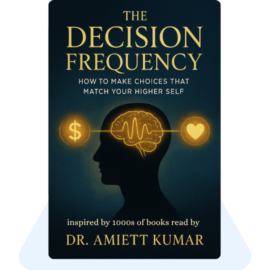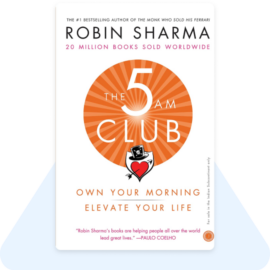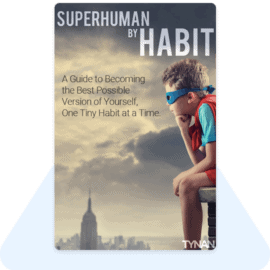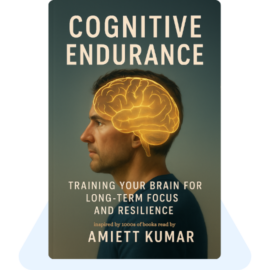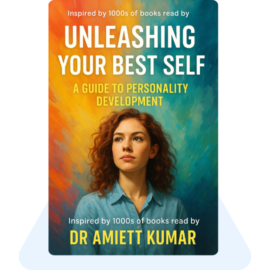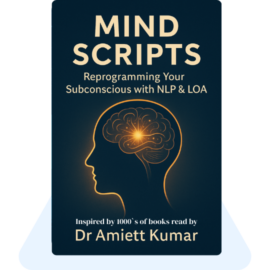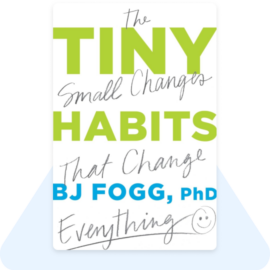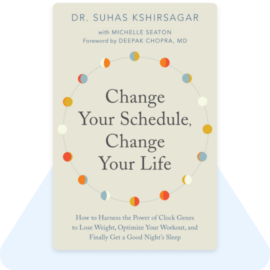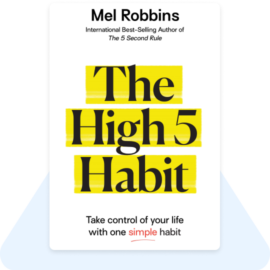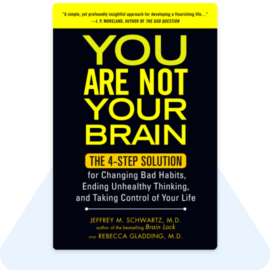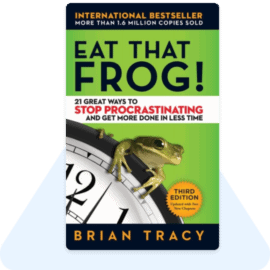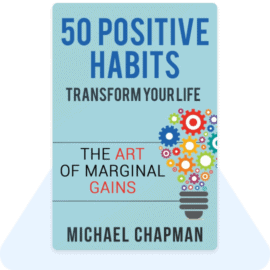Introduction — The Hidden Frequency Behind Every Decision
Every decision you make — from what you eat to whom you trust — carries an unseen vibration. Not a mystical wave floating in space, but a neural frequency — a pulse of electro-chemical signals, emotions, and subconscious patterns that ripple through your brain and body in milliseconds.
When you choose, you’re not just acting; you’re broadcasting a state of mind. Your nervous system, heart rate, and hormonal balance all align to express that inner state. That’s why two people facing the same situation can make entirely different choices — not because one is smarter, but because their internal frequencies differ.
Neuroscience shows that a decision isn’t a single event. It’s a chain reaction involving your amygdala (emotion center), prefrontal cortex (logic and planning), and insula (body awareness). Long before you say “yes” or “no,” your brain has already started preparing for the outcome — influenced by memories, habits, fears, and the emotional charge behind them.
Most people believe they make decisions through logic. In reality, logic is often the story we tell ourselves after the decision has already been made by deeper, faster neural processes.
The goal of this book is to help you tune those deeper processes. To understand how your biology, habits, and focus create a personal decision frequency — and how you can re-tune it for clarity, confidence, and long-term coherence.
This isn’t about manifesting outcomes by thought alone; it’s about learning the science of alignment. When your emotions, body, and intellect are synchronized, decisions stop feeling like battles — they become natural extensions of your highest intelligence.
“Your life is the sum total of the frequencies you decide from.”
Chapter 1 — The Neuroscience of Choice: How the Brain Builds Decisions
If you could watch your brain during a decision, you wouldn’t see one part lighting up — you’d see a network in motion. The prefrontal cortex analyzes, the limbic system evaluates safety, and the basal ganglia scans old patterns to predict the outcome.
In short, the brain doesn’t choose; it predicts what will keep you safe, rewarded, or consistent with your past identity.
Every decision begins as a prediction loop.
Your brain asks three silent questions:
- Have I seen this before? (Memory)
- How did I feel last time? (Emotion)
- What should I expect now? (Anticipation)
This process happens in less than 300 milliseconds — before “you” consciously step in. That’s why we often repeat old mistakes: the brain favors familiarity over innovation because predictability feels safe.
Neuroscientists call this the efficiency principle — the brain’s tendency to conserve energy by automating repetitive thought patterns. What feels like “instinct” is often a replay of your neural history.
That’s also why habit change feels hard: you’re not fighting laziness, you’re rewiring a system designed to prefer what it already knows.
The prefrontal cortex — your seat of conscious will — is like a conductor. It doesn’t play instruments; it synchronizes them. When stress, fatigue, or emotional overload hijack this part of the brain, the limbic system takes over. The result: impulsive buying, reactive arguments, or avoidance.
Understanding this is empowering — because once you see that poor decisions are neurological shortcuts, not moral failures, you can start to update them consciously.
One of the most fascinating discoveries in cognitive neuroscience is that clarity is physical.
When you feel centered and calm, your brain waves move into alpha coherence — making it easier for neural circuits to communicate efficiently. In contrast, anxiety triggers beta overload, scattering focus and creating decision fatigue.
Thus, emotional regulation is not “soft skill” work — it’s brain optimization.
“The smartest decision-maker is not the one who knows the most, but the one whose brain is calm enough to listen.”
Key Takeaway:
Your brain builds decisions through prediction, not logic. The clearer and calmer your inner state, the more accurately your mind can forecast what truly serves you. Clarity is not a thought — it’s a frequency state of the brain.
Chapter 2 — The Emotional Echo: Why Feelings Decide Before Logic Does
Before you think, you feel.
Before you analyze, your body has already voted.
Neuroscientist Antonio Damasio’s research on “somatic markers” revealed a stunning truth — emotions act as neural shortcuts that help the brain decide faster. Every past experience leaves a faint emotional residue, and your brain consults that feeling long before it pulls data from logic.
So when you face a choice, your nervous system instantly scans:
“What did this feel like last time?”
If your past decision created pleasure, your brain leans in. If it created pain, it tenses. This automatic reaction is called emotional priming — your body’s predictive language.
That’s why many of our “rational” decisions are emotional repetitions.
We invest in the same kind of people, react the same way in conflict, and procrastinate the same tasks — not because we lack discipline, but because our nervous system is trained to chase familiar emotional outcomes.
Here’s the paradox: emotions are neither right nor wrong — they’re data, not directions.
The key is to decode them, not obey them blindly.
For instance:
- Anxiety might be signaling uncertainty, not danger.
- Guilt could mean growth — you’re breaking an old identity.
- Excitement and fear often share the same physiological frequency.
Learning to pause and name your emotion activates the prefrontal cortex, reducing limbic dominance. This simple act — “name it to tame it” — turns raw emotion into conscious energy.
When you begin to observe your emotional echoes rather than get trapped in them, your frequency stabilizes. You stop being emotionally reactive and start being emotionally intelligent — not suppressing feelings, but synchronizing with them.
“Emotions are the body’s language for energy in motion.
Learn to translate them, and you’ll learn to trust yourself.”
Key Takeaway:
Your emotions decide milliseconds before your mind does. They’re not obstacles to good decisions — they’re signals from your internal GPS. Learn to interpret them, and your choices will carry emotional precision rather than emotional noise.
Chapter 3 — Cognitive Noise: When Overthinking Distorts Frequency
If your mind feels cluttered, your decisions will too.
Every thought you think generates a measurable neural signal — a micro-pulse of electrical activity between neurons. When too many conflicting thoughts arise, your brain’s signal-to-noise ratio drops. This means the message — your true intention — gets buried under mental static.
Cognitive scientists estimate that an average person makes nearly 35,000 micro-decisions per day.
Each choice — scroll or not scroll, reply or ignore, check or rest — consumes a fragment of neural energy.
When your brain runs too many open loops, it starts confusing urgency with importance.
This phenomenon, called decision fatigue, doesn’t just drain focus; it distorts perception.
You start doubting clear choices, second-guessing intuition, and mistaking motion for progress. The mind, overloaded, begins broadcasting fragmented frequencies — like trying to tune multiple radio stations at once.
To restore clarity, you must reduce cognitive noise, not force more willpower.
A few powerful neural decluttering habits include:
- Single-tasking: Do one thing completely. Every switch costs energy.
- Micro Pauses: Two deep breaths between tasks reset the nervous system’s rhythm.
- Mental Offloading: Write your to-dos, worries, or ideas. The brain trusts paper more than memory.
- Digital Minimalism: Notifications train your amygdala to expect distraction. Silence is the new productivity.
- Evening Closure Ritual: Review the day before sleeping — it completes open loops in the hippocampus, improving next-day clarity.
When the brain quiets, the body follows.
Clarity is not created by doing more — it emerges when unnecessary thinking stops interfering with authentic knowing.
Your decisions don’t need more data; they need more stillness.
Stillness isn’t the absence of thought — it’s the alignment of thoughts around a single clear signal.
“The mind speaks loudest when it is least certain. Silence is where the brain recalibrates its wisdom.”
Key Takeaway:
Overthinking scatters your mental frequency. Decision clarity improves not through effort, but through neural simplicity — the art of reducing mental noise so your natural intelligence can lead.
Chapter 4 — The Habit Loop of Choice: Why You Keep Choosing the Same Way
Every decision you repeat often enough becomes invisible.
The brain calls it efficiency; life experiences it as autopilot.
Psychologist Charles Duhigg and neuroscientist Ann Graybiel both discovered that once a behavior repeats, it gets stored in the basal ganglia — the part of the brain that runs automatic programs. What began as a conscious decision (drive a car, check the phone, comfort-eat) eventually becomes a pre-coded loop requiring almost no energy.
Each habit follows a simple yet powerful formula:
Cue → Routine → Reward.
But here’s the deeper layer most miss — your emotional state during the habit becomes part of the code.
If you reached for dessert after stress, your brain didn’t just learn “eat sugar”; it learned “stress = soothe.”
So the next time tension rises, the same frequency fires automatically.
You aren’t addicted to sugar — you’re addicted to emotional relief.
The subconscious prefers familiarity over accuracy. That’s why we keep choosing the same relationships, the same reactions, the same doubts. Habits aren’t built on logic; they’re built on emotional consistency.
The key to breaking the loop isn’t resistance — it’s replacement.
When you insert a new routine that delivers a similar emotional payoff but healthier reward, the brain gradually rewires its predictive pattern.
For instance:
- Replace scrolling with stretching — same micro-dopamine, cleaner energy.
- Replace complaining with journaling — same verbal release, higher clarity.
- Replace delay with decisive micro-action — same comfort of control, forward momentum.
Each repetition rewrites your neural identity. And identity, not willpower, decides your frequency.
“You don’t rise to your goals; you return to your habits.
Your habits are the vibration your brain trusts most.”
Key Takeaway:
Your choices repeat because your nervous system favors emotional safety over new outcomes.
Reprogram the emotional reward inside the habit, and your decision loop transforms naturally.
Chapter 5 — The Frequency of Focus: The Biology of Attention
Focus is your brain’s most expensive currency.
Where attention goes, neural resources flow.
At the core of attention lies the Reticular Activating System (RAS) — a network of neurons in your brainstem that decides what enters consciousness. It filters millions of sensory inputs per second and highlights only what matches your current priorities and beliefs.
That’s why, after buying a red car, you suddenly see red cars everywhere. Your world didn’t change — your filters did.
This means focus isn’t just about discipline; it’s about programming your filters.
Whatever narrative you feed your mind — “I’m overwhelmed,” “Opportunities find me,” “People can’t be trusted” — becomes the search query your RAS obeys.
Your brain literally edits reality to confirm your dominant frequency.
In neuroscience, this is called attentional bias.
In daily life, it feels like destiny.
Modern research shows that sustained focus increases myelin density along the neural pathways you use most. In simpler terms, neurons that fire together wire faster together.
So every time you pay attention to fear, you’re speeding up fear-based wiring. Every time you focus on clarity, you strengthen circuits of calm.
To recalibrate focus frequency, apply three practical shifts:
- Morning Directive Intent:
Start your day by writing the top 3 emotional states you wish to embody (e.g., calm, curiosity, decisiveness). Your RAS will unconsciously scan for matching evidence all day. - Attention Audit:
Every few hours, ask, “Where is my focus now, and is it serving me?”
This micro-awareness interrupts autopilot thinking loops. - Environmental Cues:
Surround yourself with triggers of the frequency you desire — lighting, sound, posture, people. The brain anchors attention through sensory associations.
Focus isn’t forced concentration; it’s gentle alignment.
The more you train your mind to attend intentionally, the more life starts reflecting that precision back.
“Reality doesn’t respond to what you want — it responds to what you repeatedly notice.”
Key Takeaway:
Attention shapes perception, and perception drives decision.
Train your focus to match your desired emotional frequency, and your brain will begin filtering reality through coherence instead of chaos.
Chapter 6 — Decision Fatigue: The Hidden Drain on Willpower
Your brain has a limited supply of decision energy each day.
Every email replied to, outfit chosen, or message checked uses up a bit of cognitive fuel.
Researchers at Stanford and Columbia have shown that the prefrontal cortex — your “decision-making muscle” — tires with use, much like any physical muscle. When overused, it defaults to the easiest available option: the most familiar habit or the quickest relief.
This is why people often make great choices early in the day and impulsive ones later. It’s not weakness — it’s biological exhaustion.
This silent erosion of clarity is called decision fatigue.
You don’t notice it until your motivation drops and your self-control feels thin. Suddenly, “I’ll deal with it tomorrow” becomes your brain’s recovery plan.
But the solution isn’t to increase willpower — it’s to reduce decision load.
Smart decision-makers design environments that minimize unnecessary choices, freeing up bandwidth for what matters.
Here’s how:
- Automate the Repetitive:
Schedule your workouts, meals, or clothing choices. Repetition preserves decision energy for creativity.
(Steve Jobs wore the same outfit daily for a reason.) - Pre-Decide Your Priorities:
Create a “decision hierarchy” — what gets your best energy?
For example: health > work > social media. When conflicts arise, the hierarchy decides, not emotion. - Batch Similar Tasks:
Handle similar types of decisions together — like replying to all messages in one slot. It reduces context switching, which drains glucose in the brain. - Build Recovery Windows:
Short walks, hydration, or mindful breaths between choices reset prefrontal activity. The brain recovers quickly if given even brief stillness.
Ultimately, willpower is a resource, not a personality trait.
Your energy is your most sacred asset — protect it with structure, not struggle.
“Discipline isn’t about doing more; it’s about deciding less on what doesn’t matter.”
Key Takeaway:
Poor decisions rarely come from bad intent — they come from depleted clarity.
The less mental clutter you manage, the more energy you’ll have for decisions that truly define your life.
Chapter 7 — The Alignment Zone: How Coherence Feels in the Body
Some decisions don’t just sound right — they feel right.
That’s not intuition as mystery; it’s biological coherence.
The human body runs on an elegant feedback loop between heart, brain, and nervous system. When they’re synchronized, we experience calm clarity — a state neuroscientists call physiological coherence.
In this state, heart rate variability (HRV) becomes smooth and rhythmic, brain waves stabilize, and hormones like cortisol drop.
This is what “alignment” feels like in real life — your body and mind vibrating in the same rhythm.
Most of us have been conditioned to think harder when confused. But clarity isn’t born in thought; it’s born in regulation.
When the body is tense, even brilliant logic turns reactive.
When the body is relaxed, even complex problems simplify.
Your body often knows before your brain does.
In one study at the HeartMath Institute, participants’ heart rhythms responded to emotional images seconds before the brain consciously processed them.
That “gut feeling” is your nervous system’s predictive intelligence — it’s reading the field before your intellect catches up.
To access the Alignment Zone, practice small coherence rituals daily:
- Heart Breathing:
Place a hand on your chest. Inhale for 5 seconds, exhale for 5 seconds, and imagine the breath flowing through the heart. Within 90 seconds, your HRV starts stabilizing. - Body Check-Ins:
Ask, “Where do I feel tension?” before deciding.
If your shoulders are tight or jaw clenched, pause. The body is signaling cognitive overload. - Emotional Labeling:
Name what you feel, even briefly.
It converts emotion from chaos to data — from limbic to logical control. - Sensory Grounding:
Notice 3 things you can see, 2 you can touch, 1 you can hear.
This anchors you in present-moment awareness, where coherence thrives.
When coherence increases, choices feel less like guessing and more like remembering.
You’re no longer trying to make the “right” decision — you’re simply returning to what’s already right for you.
“Alignment is not found in thought; it’s felt as a calm certainty in the body.”
Key Takeaway:
Your nervous system is your decision compass.
When body, breath, and brain move in sync, intuition sharpens and logic deepens — this is the frequency of alignment.
Chapter 8 — Behavioral Design: Architecting Better Choices Daily
Great decision-making isn’t about more self-control — it’s about better architecture.
When you can’t trust your moods, trust your systems.
Behavioral scientists like BJ Fogg and Richard Thaler call this choice architecture — the art of shaping environments so the easiest option is also the wisest.
Your surroundings, routines, and even digital tools constantly “nudge” your neural pathways. The design of your space is quietly designing your destiny.
The Brain’s Bias for Ease
Your brain always seeks the path of least resistance.
That’s not laziness; it’s efficiency. If your healthy habit requires friction while your distraction is one tap away, your decision frequency tilts toward instant relief.
So instead of forcing willpower, reduce friction for the right behaviors and increase friction for the wrong ones.
- Keep your workout mat where you’ll trip on it.
- Move social apps to a hidden folder.
- Keep water beside your desk, not coffee alone.
Small cues reroute big frequencies.
The 3 Design Levers
- Cue Clarity: Make the trigger obvious — a visible reminder sets intention before impulse takes over.
- Effort Economy: Simplify first steps; once action starts, momentum sustains itself through dopamine feedback.
- Reward Visibility: Track progress visually — checkmarks, streaks, or journaling anchor satisfaction into the limbic system.
The Environment Becomes Identity
When systems take over, freedom expands.
You waste less energy debating, and more energy creating.
Neural energy once used for restraint now fuels invention, conversation, leadership.
“Discipline is not about force; it’s about intelligent design.”
Key Takeaway:
You don’t need stronger willpower — you need smarter surroundings.
Architect your day so that desired actions are the path of least resistance.
Chapter 9 — The Decision Identity: Becoming the Kind of Person Who Chooses Well
Every decision reinforces an identity — Who I am when nobody’s watching.
And over time, identity becomes destiny.
Your past decisions weren’t random; they were expressions of the person you believed yourself to be at that moment.
Change your identity, and your decision frequency rewires automatically.
Neuroscience calls this self-referential processing.
Whenever you think “I am …” the brain builds a neural map around that statement.
If you repeat “I’m always late” or “I can’t focus,” those words solidify into predictive circuits.
Likewise, saying “I’m learning to become more consistent” shifts the map toward progress.
The self isn’t a fixed noun — it’s a dynamic signal your brain updates every time you act differently.
From Behavior → Belief → Being
- Behavior: Take one aligned action, even if small.
- Belief: The brain notices the mismatch — “I just acted differently.”
- Being: Repetition seals the new identity through neuroplasticity.
This is why micro-decisions matter more than grand declarations.
Ordering water instead of soda, speaking calmly instead of reacting — each tiny choice emits a frequency of who you’re becoming.
The Coherence of Character
Consistency creates coherence.
When your thoughts, words, and actions stop contradicting each other, the brain stops wasting energy on internal conflict.
That freed energy becomes intuition — a quiet confidence that whispers: “This feels like me.”
Your goal isn’t perfection; it’s integration.
You don’t need to make flawless decisions — just coherent ones, made from the same steady identity every time.
“Identity is the echo of your smallest choices repeated with awareness.”
Key Takeaway:
Decisions shape identity, and identity simplifies future decisions.
Be the kind of person who chooses with clarity, and your life will organize itself around that frequency.
Conclusion — The Future Is Decided in Microseconds
Every life, no matter how vast or ordinary, is built through invisible moments — the small pauses before we say yes or no, the split-seconds when the brain, heart, and past all negotiate for control.
That fraction of time — the space between impulse and intention — is where your entire future lives.
The question isn’t “Will I make the right decision?” but rather,
“From which state of mind am I deciding?”
Throughout this book, we’ve seen that every choice carries a frequency — not mystical, but measurable: the electrical rhythm of your neurons, the chemical tone of your emotions, the physical tempo of your heartbeat.
When those frequencies are scattered, decisions feel confusing.
When they’re coherent, choices become effortless, natural, and aligned.
Your Decision Frequency is your unique energetic signature.
It’s how your nervous system translates your thoughts into motion.
And the more aware you become of it, the more consciously you can tune it.
Each chapter has revealed a layer of this tuning:
- Awareness of how your brain predicts before it decides.
- Understanding that emotion is data, not drama.
- Quieting cognitive noise to restore inner bandwidth.
- Reprogramming habitual loops through emotional rewiring.
- Directing focus like a sculptor shaping attention.
- Protecting willpower through structured simplicity.
- Feeling coherence through the body’s wisdom.
- Designing environments that reinforce alignment.
- And finally, embodying an identity that naturally chooses well.
The mastery of decision-making isn’t about being certain — it’s about being centered.
The wisest people aren’t those who always know what to do; they’re the ones who know how to return to themselves before doing it.
So as you close this book, remember:
– Every thought you entertain is a vote for the kind of brain you’ll have tomorrow.
– Every emotion you regulate is a note in your frequency.
– Every small, conscious choice is a declaration of identity.
Your destiny doesn’t unfold someday in the distance — it unfolds every time you choose with coherence.
“The future doesn’t arrive fully formed.
It’s sculpted by the frequency you decide from — moment by moment, choice by choice.”
Final Takeaway:
When your mind is calm, your body regulated, and your intention clear, every decision becomes a statement of alignment.
And when you live from that alignment, you no longer chase the right path — you become it.
Learn more from Dr Amiett Kumar:

